 Arriving just eight months after the announcement of the upmarket D200, Nikon’s new D80 builds on the success of 2004’s D70, offering a slew of enhancements, a larger LCD and an inevitable upping of the pixel count.
Arriving just eight months after the announcement of the upmarket D200, Nikon’s new D80 builds on the success of 2004’s D70, offering a slew of enhancements, a larger LCD and an inevitable upping of the pixel count.
The D80 increases the pixel count by 67% on its predecessor to 10.2 megapixels, and manages to shrink the package down to more or less the size of the entry level D50 dSLR.
Although the reduction in size is welcome, it’s still quite a hefty beast compared to models from Olympus and Pentax, although there’s not a great deal of difference in bulk between rival cameras from Sony and Canon.
The D80 manages to borrow some of the high end features of the some of the company’s high-end cameras, inheriting the processing engine of the Nikon D2X, and the Nikon D200’s Multi CAM 1000 AF system, CCD, LCD and viewfinder.
 Clearly this mix’n’match approach makes sense for cost-aware Nikon, with interchangeable components helping to keep the prices down in a hugely competitive market, although the differences in build quality between the D80 and its big brother are clearly marked.
Clearly this mix’n’match approach makes sense for cost-aware Nikon, with interchangeable components helping to keep the prices down in a hugely competitive market, although the differences in build quality between the D80 and its big brother are clearly marked.
SD card
Users upgrading from the D70 may be mightily unchuffed to discover that Nikon has switched from Compact Flash to SD memory cards.
Capable of supporting the new Secure Digital High Capacity (SDHC) cards, this opens up potential capacities of up to 32GB and may help tempt users of compact cameras already using SD cards.
At the back of the camera we could see useful improvements to the button layout, and the 2.5″ LCD screen seemed positively enormous compared to the squinty 2″ screen on the D70.
 Interface upgrades
Interface upgrades
The on-screen user interface had also been considerably spruced up, using the same high resolution and anti-aliased fonts from the D200. The new image review zoom in/out controls improve massively on the fiddly controls of the D70.
The bigger, brighter 0.94X magnification viewfinder was equally well received; we loved the addition of the light switch to the on/off control and quickly felt right at home with the tweaked top plate layout.
ISO range has been improved to cover 100ISO right up to ISO3200 (with boost) with 0.3EV steps, backed by the same three custom NR (Noise Reduction) settings from the Nikon D200.
New editing menus offer built-in D-Lighting, Retouch Menu and Redeye removal capabilities, with a Pictmotion feature letting users playback images as slideshows.
 There’s also a host of new customisation options (a total of 32 custom functions) letting photographers set up the D80 to their needs.
There’s also a host of new customisation options (a total of 32 custom functions) letting photographers set up the D80 to their needs.
Flash
Less good is the flash sync speed dropping down to 1/200, although we’re doubtful that most users will ever notice the difference.
The electronic-release pop-up flash raises automatically in appropriate Auto modes or can be triggered manually by pressing the flash button.
The flash offers a guide number of 13 (m at ISO 100) and can also act as a commander in a wireless flash setup.
Speed
We found the D80 to be a very, very fast performer, with a near-instantaneous start-up and barely measurable shutter lag ensuring we didn’t miss a shot.
With an eye to point’n’shooters, new Black & White modes offering additional Sepia and Cyanotype options have been included, along with the usual Program, Aperture priority, Shutter priority, Manual, Auto and six programmed modes (including a new Night Landscape mode).
Matrix metering inconsistencies
The D80 comes with Nikon’s smartypants 3D Colour Matrix Metering II automatic exposure control which consults a database of more than 30,000 actual photographic scenes to help evaluate brightness, colour, contrast, selected focus area and camera-to-subject distance.
Although it generally worked well in our tests, a couple of times it threw up some clearly over-exposed scenes, which suggests that it’s not quite as user-friendly as Nikon suggest (in fact, this issue has been a hot topic on the dpreview forums with photographer Ken Rockwell declaring his D80 meter to be “the worst of any Nikon I’ve used in 20 years.”)
Although a deft bit of dialling down with the exposure compensation button can fix this easily enough, it does seem markedly different to how the D70 metered and that’s something users will have to get used to.
Conclusion
Overall, we were very impressed with the D80. It feels like a significant step up from the D70, punching above its weight in features, usability and performance.
 The camera is easy to use, feels right in the hand with all the main controls falling easily to hand, and looks like it could take the occasional knock.
The camera is easy to use, feels right in the hand with all the main controls falling easily to hand, and looks like it could take the occasional knock.
The improved viewfinder provides a big, bright view with the larger LCD screen and updated interface adding to the feeling that this is a real ‘photographers camera.’
Minor metering issues aside, images were crisp, clean and vibrant, with an improved high ISO performance making the camera a versatile performer in all conditions.
Although it’s priced ahead of its main rivals, the Canon EOS 400D and Sony Alpha, we feel that the D80 is well worth the extra outlay and offers the best all-rounder 10 megapixel DSLR of the bunch to date. Highly recommended.
Our verdict
Features: 90%
Ease of Use: 90%
Image Quality: 95%
Overall: 95%
Street price (body only) approx £599 (~$900, ~€585)
Nikon D80 main specifications
- 10.2 megapixels
- 11-area Multi-Cam 1000 AF system
- ISO sensitivity range ISO100 to ISO1600 plus HI-1(equivalent ISO3200)
- SDHC compatible
- 2.5inch LCD screen
- File formats – Compressed NEF or JPRG
- Compatible with all Nikon AF lenses.
- 3D colour matrix metering II, and centre-weighted or spot metering modes
- Exposure metering range – EV0 to EV20 with 3D colour matrix or centre weighted metering
- Exposure compensation up to +/-5EV
- Shutter speed range – 30secs to 1/4000sec and bulb
- Flash synch up to 1/200sec
- Flash compensation -3 to +1EV
- Depth-of-field preview
- Rechargeable EN-EL3e Li-ion battery
- Dimensions 132mm(W) x 103mm(H) x 77mm(D)
- Weight – 585g without battery
Full D80 review at DPReview
 The days of blokes nervously tip toeing up to the top shelf of newsagents for a slice of saucy sleaze look to be growing to a close, as a new report shows the explosive growth of the mobile adult content market.
The days of blokes nervously tip toeing up to the top shelf of newsagents for a slice of saucy sleaze look to be growing to a close, as a new report shows the explosive growth of the mobile adult content market. Softcore in the boozer
Softcore in the boozer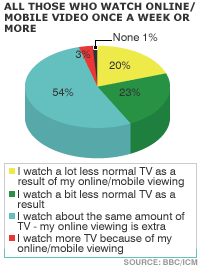 Video sharing Websites like YouTube are starting to impact on TV viewing figures, with more people switching off and logging on.
Video sharing Websites like YouTube are starting to impact on TV viewing figures, with more people switching off and logging on.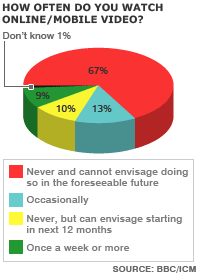 A further 13% of those questioned said they watched online occasionally, with another 10 per cent saying they expected to start in the coming year.
A further 13% of those questioned said they watched online occasionally, with another 10 per cent saying they expected to start in the coming year.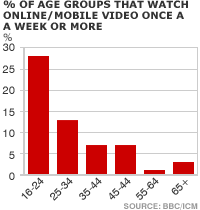 The majority of the population still prefers to watch the old fashioned gogglebox, with two-thirds of the population shunning online TV and saying that had no intention of starting in the next 12 months.
The majority of the population still prefers to watch the old fashioned gogglebox, with two-thirds of the population shunning online TV and saying that had no intention of starting in the next 12 months.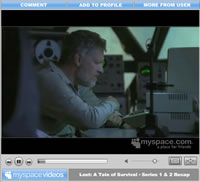 Wow … things are really starting to gel across the Murdoch media businesses, as James Murdoch starts showing his hand. Perhaps this is the first real example of seeing James’ talent on with what we’ve been told was his passion – that for convergence.
Wow … things are really starting to gel across the Murdoch media businesses, as James Murdoch starts showing his hand. Perhaps this is the first real example of seeing James’ talent on with what we’ve been told was his passion – that for convergence. A number of Sky One shows will be available over the service. Sounds great, until you imagine that 93% of the those using Sky By Broadband already own a Sky+ box – having the ability to see the shows when they want to anyway.
A number of Sky One shows will be available over the service. Sounds great, until you imagine that 93% of the those using Sky By Broadband already own a Sky+ box – having the ability to see the shows when they want to anyway. The pricing of PSone games to be played on the Sony PSP have been announced.
The pricing of PSone games to be played on the Sony PSP have been announced.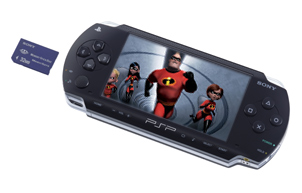 It was initially envisaged that Sony would give access to the Playstation Store through the PSP using its WiFi connection. We can see one advantage of not doing this – people wanting to use the service will need to buy a PS3!
It was initially envisaged that Sony would give access to the Playstation Store through the PSP using its WiFi connection. We can see one advantage of not doing this – people wanting to use the service will need to buy a PS3!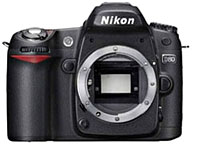 Arriving just eight months after the announcement of the upmarket D200, Nikon’s new D80 builds on the success of 2004’s D70, offering a slew of enhancements, a larger LCD and an inevitable upping of the pixel count.
Arriving just eight months after the announcement of the upmarket D200, Nikon’s new D80 builds on the success of 2004’s D70, offering a slew of enhancements, a larger LCD and an inevitable upping of the pixel count.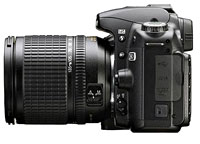 Clearly this mix’n’match approach makes sense for cost-aware Nikon, with interchangeable components helping to keep the prices down in a hugely competitive market, although the differences in build quality between the D80 and its big brother are clearly marked.
Clearly this mix’n’match approach makes sense for cost-aware Nikon, with interchangeable components helping to keep the prices down in a hugely competitive market, although the differences in build quality between the D80 and its big brother are clearly marked.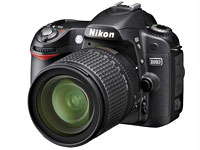 Interface upgrades
Interface upgrades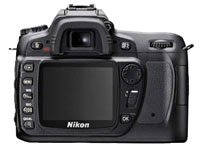 There’s also a host of new customisation options (a total of 32 custom functions) letting photographers set up the D80 to their needs.
There’s also a host of new customisation options (a total of 32 custom functions) letting photographers set up the D80 to their needs.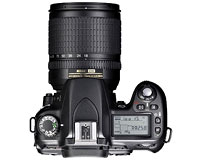 The camera is easy to use, feels right in the hand with all the main controls falling easily to hand, and looks like it could take the occasional knock.
The camera is easy to use, feels right in the hand with all the main controls falling easily to hand, and looks like it could take the occasional knock. We spent a fair bit of time watching online advertising, as the income for Digital-Lifestyles comes in solely from it.
We spent a fair bit of time watching online advertising, as the income for Digital-Lifestyles comes in solely from it.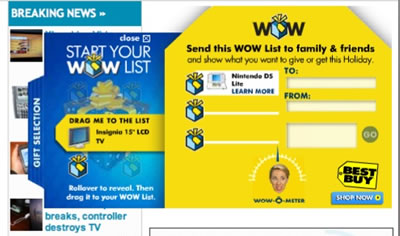
 We see that Engadget are offering a charity auction for Save Dafur.
We see that Engadget are offering a charity auction for Save Dafur. Ever self-aware, Engadget also point out they understand the irony of raising money for a Dafur charity, by playing a video game called Gears of War. Their defence is that their readers chose the charity and that they’d already decided what the event was going to be. As some step towards balancing this, Engadget have named the event Gears of Peace.
Ever self-aware, Engadget also point out they understand the irony of raising money for a Dafur charity, by playing a video game called Gears of War. Their defence is that their readers chose the charity and that they’d already decided what the event was going to be. As some step towards balancing this, Engadget have named the event Gears of Peace. For a long time Health Authorities have been having kittens about the amount of people who miss their hospital appointments – and quite rightly, it’s a tremendous waste of resources, that are already stretched.
For a long time Health Authorities have been having kittens about the amount of people who miss their hospital appointments – and quite rightly, it’s a tremendous waste of resources, that are already stretched. It’s not just appointments that can be handled, Orange tell us that, “Among many benefits, text messaging prompts a better response to health promotion campaigns such as invitations to receive flu jabs or attend asthma clinics.” The word promotion could be worrying if abused.
It’s not just appointments that can be handled, Orange tell us that, “Among many benefits, text messaging prompts a better response to health promotion campaigns such as invitations to receive flu jabs or attend asthma clinics.” The word promotion could be worrying if abused.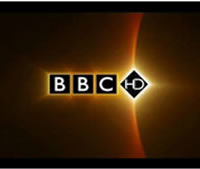 Following the trial in London, HD TV over Freeview has been judged as a success after the six months that it’s been running.
Following the trial in London, HD TV over Freeview has been judged as a success after the six months that it’s been running. Simon Fell, Director of Technology, ITV Consumer was upbeat, “We have conclusively demonstrated that HD services can run effectively alongside standard Freeview broadcasts. All major technical hurdles are behind us, and collectively we can focus on potentially providing services for the forecasted sales of 10 million flat screen TVs by 2010.”
Simon Fell, Director of Technology, ITV Consumer was upbeat, “We have conclusively demonstrated that HD services can run effectively alongside standard Freeview broadcasts. All major technical hurdles are behind us, and collectively we can focus on potentially providing services for the forecasted sales of 10 million flat screen TVs by 2010.”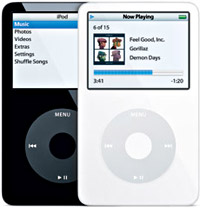 Industry analysts Nielsen Media Research have discovered that Apple iPod-toting consumers aren’t going ga-ga for video, with the vast majority preferring to listen to music and audio podcasts rather than watch TV or movies.
Industry analysts Nielsen Media Research have discovered that Apple iPod-toting consumers aren’t going ga-ga for video, with the vast majority preferring to listen to music and audio podcasts rather than watch TV or movies.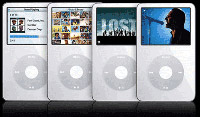 Not surprisingly this figure rises for Video iPod users, who were found to spend 11 per cent of their time watching videos.
Not surprisingly this figure rises for Video iPod users, who were found to spend 11 per cent of their time watching videos. We know that we barely ever watch video content on our mobile players, but then we’d imagine the video-playing target demographic is considerably younger than us comparative crumblies (i.e we’re over 20).
We know that we barely ever watch video content on our mobile players, but then we’d imagine the video-playing target demographic is considerably younger than us comparative crumblies (i.e we’re over 20).